Reviews and recommendations are unbiased and products are independently selected. Postmedia may earn an affiliate commission from purchases made through links on this page.
Anthony Gismondi: Multi-vintage sparklers you can pour or store

Anthony Gismondi offers up seven ‘multi-vintage’ bottles perfect for now or down the road
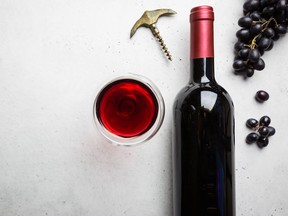
Article content
Climate change, or climate chaos, as some call it, is wreaking havoc with harvests in Champagne. Warmer weather and riper grapes are usually a good thing, but too much heat is bad for one of the world’s most fascinating wines that walk the tightrope of tension between fruit and bright acidity.
Advertisement 2
Article content
Recent weather calamities have led to more diminutive crops and less certainty in grape supply, but it is hardly a disaster. Suffice it to say, no one needs to hold a fundraiser for Champagne producers sitting on hundreds of millions of bottles with an average price among the highest in wine.
Article content
Today we look at the wine category the Champenois embraced before climate change, allowing them the flexibility to absorb shortages or large surpluses and remain in control of their destiny as much as possible. It is a category once described as “non-vintage” but is now more aptly known as multi-vintage. These multi-blended wines contain different grapes from several sub-regions and scores of vineyards that, more often than not, are a mix of several years of older reserve wine.
Advertisement 3
Article content
The same flexibility allows each producer to reproduce a consistent house style year in and year out — not unlike a fine cognac or blended whiskey simply by adding older wines drawn from a diverse range of vineyards. So while most of us buy Champagne when needed, it is possible to age your bottles in the cellar — it is a great way to increase the complexity and value of your wine, and it’s free.
Here’s the tip. When you purchase multi-vintage Champagne, use a felt marker to record the purchase date on the label. That way, the next time you’re in the cellar looking for a bottle to open, you can quickly locate the oldest bottle to serve. With New Year’s Eve only a week out, what follows is a quick look at some personal favourites — multi-vintage sparklers you can pour or store.
Advertisement 4
Article content
Krug Grande Cuvée NV: The granddaddy of all non-vintage sparklers, Krug is the best in the category. There are as many as 20 harvests in any bottle, making it the biggest, full-flavoured sparkler in the marketplace ($286).
Bollinger Special Cuvée Brut NV: This is an intricate mix of the current year’s fruit and a majority of reserve wines, some in magnums for 15 years. Special Cuvee is aged twice the time required by law ($95).
Charles Heidsieck Brut Reserve N/V: Champagne Charlie is a classic, rich, toasty bubble with juicy, stony, green apple fruit, some lemon, hazelnuts and pear with just a hint of sweetness in the finish ($73.99).
Lanson Green Label Bio-Organic NV: The Lanson Green label has an appealing fresh green apple style streaked with lemon pith, floral, mineral, and chalky notes. Its precise, tight linear palate refreshes every sip. Certified organic ($89.99).
Advertisement 5
Article content
Louis Roederer Collection 242 N/V: An epicurean bubble, complex, nuanced, mixing that Roedered lighter than air fruit and citrus zest with a leesy, hazelnut finish. It would appear they are going after Bollinger with this style which is a noble pursuit. This will be a fun label to watch in the coming decade ($82.99).
Taittinger Brut Reserve NV: The high percentage of Chardonnay (60 per cent) makes this blend unique among its competitors and gives this bubble a leg up in finesse and delicacy ($74.99).
Pol Roger Cuvée de Reserve: One of the most elegant expressions of champagne. Its restrained nose and creamy aftertaste attract beginners and connoisseurs alike ($79.99/$159.99 magnum).
Enjoy the holidays, and please drink responsibly.
Advertisement 6
Article content
Weekend wine picks
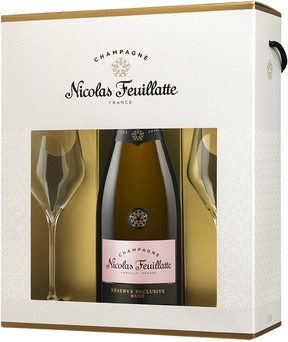
Champagne Nicolas Feuillatte Réserve Exclusive Brut N/V, Champagne, France
$79.99 I 90/100
UPC: 3282946006835
Nicolas Feuillatte is one of the largest co-ops in Champagne, with some 4500+ growers. Co-ops seldom hit the highest notes, but they have a massive selection of fruit to choose from, and this Reserve Exclusive selection of 40/40/20 Pinot Noir, Pinot Meunier and Chardonnay is well chosen and made. It spends 42 months on its lees, creating a creamy, leesy, toasted palate, all elements required to appeal to the fans. Expect fresh red apples dusted in citrus and almond, with a mineral-chalky upbeat finish. This was a pleasant surprise and an excellent value in the current market. Comes with two champagne glasses.
Advertisement 7
Article content
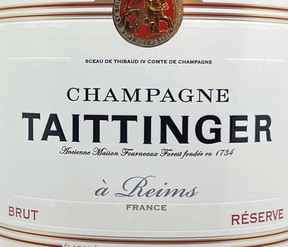
Champagne Taittinger Brut Reserve N/V, Champagne, France
$74.99 I 90/100
UPC: 3016570001030
This classic blends 40 per cent Chardonnay, 45 per cent Pinot Noir, and the remainder Pinot Meunier from across 35 vineyards in the Marne, Sézanne and Aube, half of which come from estate vineyards. Around 30 per cent of reserve wines are used. After full MLF, this spent a minimum of three years on lees before a dosage of 9 g/L. Pure and stately red and green apple, lemon, and pear blossom flood a cushioned palate with a tightening lemony brace around the edges. This bottle is bright and would be a welcome addition to any dinner/festivities.

Champagne Louis Roederer Collection 242 N/V, Champagne, France
$82.99 I 92/100
UPC: 03114080414354
Advertisement 8
Article content
A new wine from Roederer forged by three decades of climate change will be the successor to Brut Premier. The multi-vintage, retooled 242 is free from any formulas and will be blended each year to tell the best story of its terroir. The secret sauce is the new “Perpetual Reserve,” started in 2012, enriched every year from the latest harvest and stored in large-capacity stainless steel. The Perpetual Reserve will also significantly increase its proportion of oak-aged reserve wines that go into the blends. It is all aged between three and four years, and you feel the richness and weight from the first sip, suggesting this is different. An epicurean bubble, complex, nuanced, mixing that Roedered lighter than air fruit and citrus zest with a leesy, hazelnut finish. This will be a fun label to watch in the coming decade.
Advertisement 9
Article content

Champagne Bollinger Rosé Brut N/V, Champagne, France
$139.99 I 93/100
UPC: 3052853078443
It has been said that Madame Bollinger never understood the need for Rose Champagne and was against creating one. The family waited a long time but finally gave in to demand and released its first pink in 2007. The latest offering, a 62/24/14 Pinot Noir, Chardonnay and Pinot Meunier blend, continues down the delicate road shedding a touch of colour and weight for subtlety and complexity. The colour comes from a small percentage of red wine from Verzenay and Aÿ. The freshness that draws you into the glass and the precision of the flavours hold your attention. Seriously good and one of the best rosés in the category.
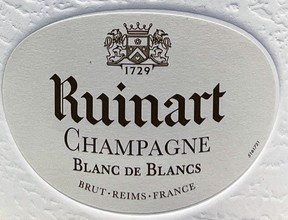
Champagne Ruinart Blanc de Blancs N/V, Champagne, France
Advertisement 10
Article content
$134.99 I 93/100
UPC: 3185370155974
Ruinart Blanc de Blancs continues to ooze elegance and style, evocative of its classic bottle shape. It is made with 1er Cru fruit on the Côtes de Blancs and Montagne de Reims, with 10 per cent each from Sézanne and St. Thierry. Aging on the lees is for a minimum of 28 months before disgorgement and top-up of barely noticeable 8.5 g/L of sugar. Fineness, purity, light on its feet, and ethereal all speak to the styling of this almond-scented, toasted fizz framed with impossibly tiny bubbles that lead to a bright, lengthy, meringue-like finish. Nothing but finesse and elegance is a pleasure to nose and drink. Comes with a cooling white bottle jacket.
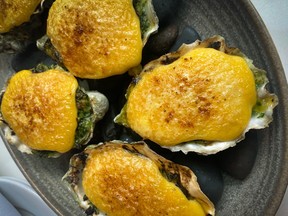
Recipe match: Oysters Rockefeller
Advertisement 11
Article content
A perfect dish for serving at a holiday party, these oysters shared by Chef Tommy Shorthouse of Fanny Bay Oysters feature a warm baked topping that gives them a flavourful boost.
Serve as a passed hors d’oeuvres while mingling or enjoy as an appetizer before a seasonal seated meal:
1 dozen Fanny Bay small- or medium-size oysters in shell
Topping
1 stalk celery, diced small
1/3 bulb fennel, diced small
3 cloves garlic, diced
2 cups (500 mL) spinach
1 oz (30 mL) white wine
1 tbsp (15 mL) butter
2 tbsp (30 mL) olive oil
Salt and pepper, to taste
Juice from 1/2 lemon, plus zest
Hollandaise Sauce
3 egg yolks
1 cup (250 mL) clarified butter
1/2 tbsp (7.5 mL) white wine vinegar
Tabasco, to taste
Juice from half of a lemon
Salt, pinch
Advertisement 12
Article content
Old Bay Seasoning, pinch
In a pan, add butter and olive oil on medium heat. Add small diced fennel, celery, garlic and shallots, and cook until tender. Add the white wine and reduce until nearly evaporated. Season with a pinch of salt, pepper, lemon and zest, then remove from heat to cool.
Bring a pot of water to simmer and blanch spinach for 5-7 seconds, then immediately remove and ice to stop the cooking. Remove spinach from ice water, drain off all of liquid. Transfer the spinach and cooled fennel/celery mixture into a food processor and blitz until finely chopped.
Shuck oysters and place them on a baking sheet in the shell. Use crumpled tin foil or rock salt to hold them up and prevent them from tipping. Spread your mixture evenly across the top of the oysters and bake at 375 F for 12 minutes or until bubbling.
Advertisement 13
Article content
While the oysters are baking, make your hollandaise sauce. In a medium metal bowl, add the egg yolks and vinegar. Whisk over a simmering pot of water, be careful not to scramble the eggs. Mixture should become a thick, ribbony consistency. Continue whisking while slowly adding in the warmed clarified butter. Season with a pinch of salt, a few dashes of Worcestershire sauce, Tabasco and fresh lemon juice.
Remove oysters from the oven and top with your hollandaise sauce and sprinkle some Old Bay Seasoning on top before serving.
Pro tip: If you have a kitchen torch, you can also lightly torch the top of the Rockefeller.
Serves 2-4.
Recipe match
The classic and rich Oysters Rockefeller calls for a dry French white like Chablis, Muscadet or Champagne.
Advertisement 14
Article content
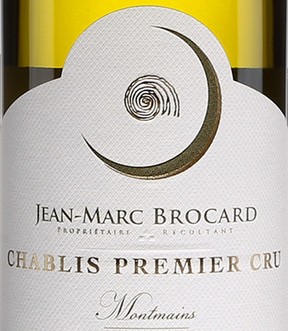
Jean-Marc Brocard Chablis Montmains 1er Cru 2020, Chablis, Burgundy, France ($58.99)
Taut and linear, and delicious, this is the ultimate shellfish wine designed to refresh the palate between every bite — the perfect match.
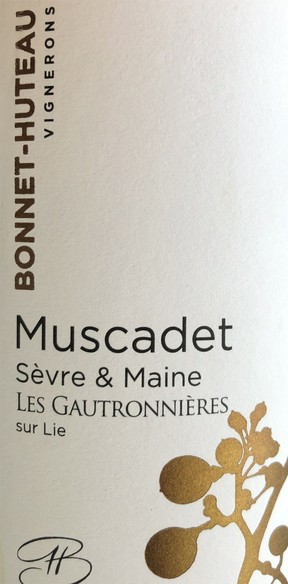
Bonnet Huteau Muscadet Sèvre et Maine sur Lie Les Gautronnières 2020, Muscadet, Loire, France ($24.95)
Mineral-driven, with a pure core of lemon, river stone, and green apple and brightened with white grapefruit peel. Oysters, anyone?
More news, fewer ads: Our in-depth journalism is possible thanks to the support of our subscribers. For just $3.50 per week, you can get unlimited, ad-lite access to The Vancouver Sun, The Province, National Post and 13 other Canadian news sites. Support us by subscribing today: The Vancouver Sun | The Province.
Source: vancouversun.com


